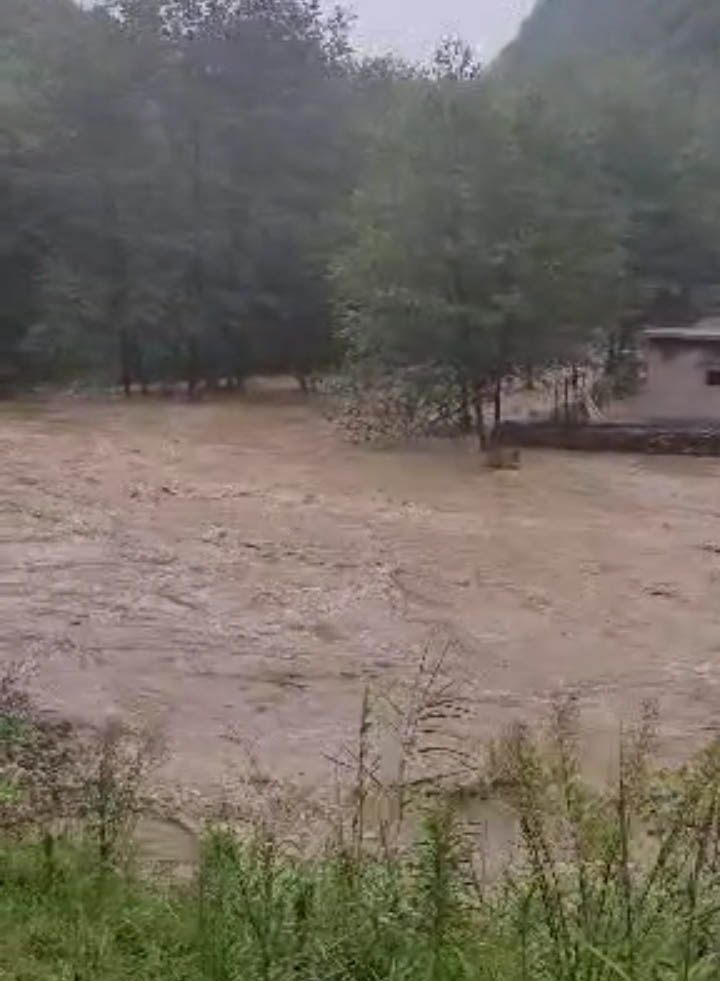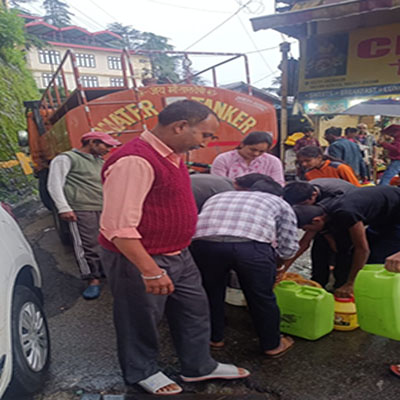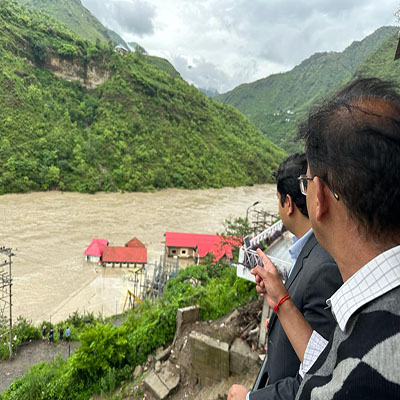Shimla: The capital city of Himachal Pradesh, seat of power is on the brink of an unprecedented water crisis, leaving its 3.5 lakh residents in a dire state of thirst. There is water and water everywhere but few drops to drink.
SJPNL was able get a mere 1.69 MLD of water by 5 PM today. The situation has reached a critical juncture.
Shockingly, only two out of several water schemes, built during the British era, have managed to withstand the fury of recent floods. Churot and Seog, the survivors, provided a meagre 1.02 MLD and 0.67 MLD respectively, preventing the city from total dehydration.
In contrast, other schemes, developed under the supervision of the now Jal Shakti Vibhag and Shimla Municipal Corporation, have failed miserably. These schemes remain submerged and non-operational due to the flooding for the past 48 hours.
Shimla's daily water demand stands at a staggering 45 MLD, intensifying the severity of the crisis.
The Shimla Jal Prabandhan Nigam Limited (SJPNL) has been haunted for the past three days by the escalating silt levels, which show no sign of receding.
The Indian Meteorological Department (IMD) has further forecasted heavy rains for July 11, exacerbating the situation.
Adding to the woes, the Chaba water supply pump house now lies submerged in the raging waters of the Satluj River, leaving SJPNL clueless about its survival amidst the swift currents.
Similar uncertainty looms over the 20 MLD Guma scheme. While the pump house remains unharmed for now, SJPNL remains uncertain about resuming pumping operations in the near future.
The 20 MLD Giri Pump House, succumbing to water inundation, has rendered pumping impossible, raising concerns about severe machinery damage caused by the ferocious Giri river.
The fate of the Koti Barandi scheme, supplying water to the Kusumpti water tank, is equally grim, as it has suffered significant damage due to flash floods.
Consequently, only the two surviving British-era schemes can provide a meagre supply of water to the city's 3.5 lakh residents.
The recent deluge has laid bare the hasty and flawed conception of new water schemes, disregarding the rising river levels.
Furthermore, these schemes' viability depends not only on the availability of electricity to power the pumping stations, but also on the mercy of the river.
Rising water levels and excessive silt have rendered the pump houses useless, making it impossible to extract even a single drop of water.
In stark contrast, the British-built gravity schemes such as Chair, Chorut and Seog continue to operate reliably without the need for power supply.
In response to the rocketing water shortage, SJPNL and private tankers have initiated water rationing, offering a meagre lifeline to residents in various localities which are without water for the last four days.
This agonizing situation is expected to persist for the next few days until the rain recedes and silt levels subside, enabling SJPNL to resume pumping operations at Giri, Guma, Chaba, and Koti Barandi.
SJPNL urgently advises residents to exercise judicious water usage until the situation normalizes. Heart-wrenching scenes unfold as residents form long queues, clutching buckets, desperately awaiting their turn to fill up a pail of water from the tankers.
District Commissioner Shimla, Aditya Negi, and SJPNL managers have personally witnessed the gravity of the water supply situation.
Helplessly, they observed the Chaba pump house succumb to the mighty Satluj River, symbolizing the severity of the crisis gripping the city.
The dire consequences of this water crisis loom large, leaving the residents of Shimla in a relentless struggle for their basic survival.






